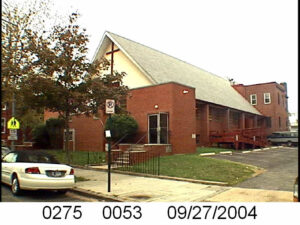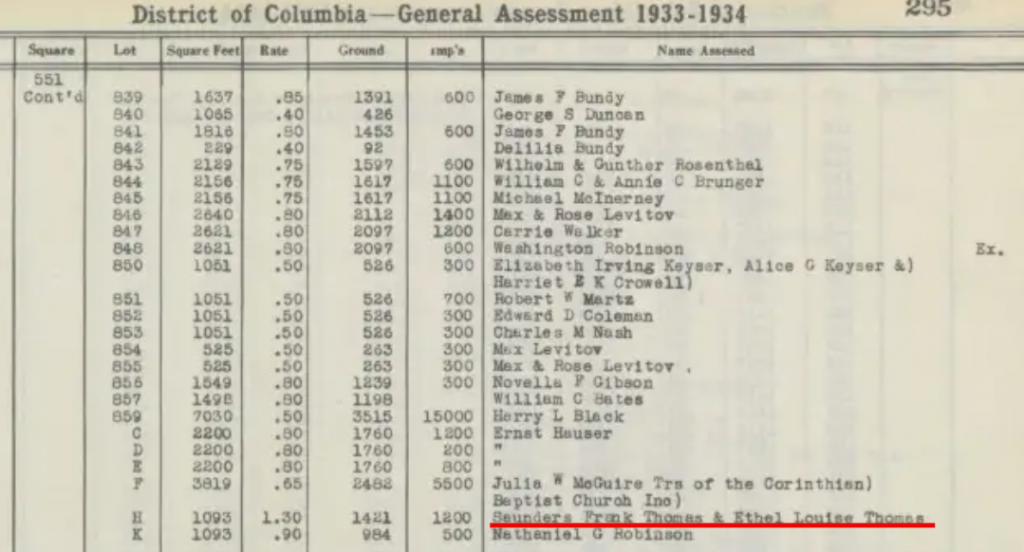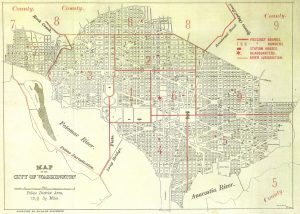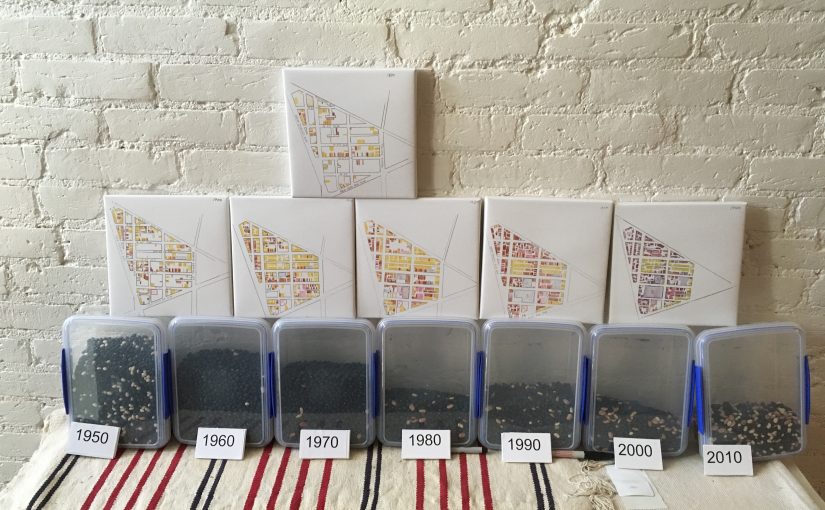Disclaimer: This has been sitting in drafts for a year. I forgot what was wrong with it. I’m gonna roll the dice and publish it.
So I have a goal to create a big ole spreadsheet of all the residents for all the censuses. Buuuuuut I need to clean up the data. The problem with the Census is sometimes I swear some of the enumerators were raging alcoholics who couldn’t find a job doing anything else. The census data is not pure, nor perfect. Sometimes a person’s only appearance is in the census, but sometimes they’ll appear elsewhere. They’ll be men who had to sign up for the draft, or business people or others who appear in city directories, and for owners after 1921 they’ll be in the Recorder of Deeds website.
So I’m going to look at homeowners who’s square or address has a question mark. These people are Clarence Washington of 126 FL Ave NW, Raymond Montgomery of 121 , Rudolph Blake of 137, Joseph Gibson of 136 Bates St NW, Florence Glover of 109 Q St NW, Jerome S. Jenkyns of 1641, John Lattimer of 1464, Roscoe Patrick, and Laura Ford of 1684 3rd St NW.
I located Clarence Washington on Square 551 lot 172. Now the problem is, that lot no longer exists. The Florida Avenue park sits there. It looks like he’s at 126 FL Ave NW, where previously he might have been at 124. It was unclear. Looking at the records, he obtained his property on September 14, 1935 with a 6% loan from National Savings and Trust Company. He appears to have been single at the time of purchase. He and his wife Clara (listed in the 1940 census) sold the house in April 1948.
Raymond Montgomery had purchased a fair amount of property, well at least someone with that name did so. Just looking at square 552 he owned lot 152, and in the current year that lot’s address is 123 P St NW. So not 121 Bates St NW as I had him in my data. Then a widower in February 1938 he bought the property. According to a October 1965 deed selling the house to a Lucille Baskin, Raymond died February 4, 1959 leaving his wife Estella a widow.
Rudolph S. Blake is another popular name for a property holder. Once again just focusing on Truxton Circle I can pin him down to Sq. 552 lot 159 (137 P St NW) starting in 1925 with his wife Ida B. She sells the property in 1948 after Rudolph as died.
Joseph and wife Novella Gibson are a problem. They are associated with property on squares 551 and 552. The documents for 551 appear to be an outlier as it is concerning a party wall between 213 and 215 Q St NW (Sq 551 lots 7 & 8). I believe they probably lived on square 552 on lot 206, currently 136 Bates St NW. February 1926 Joseph and wife “Navalla” obtain 136 Bates with a $2,250 loan at 6% APR with monthly payments of $30. The Gibsons sell in 1965 to Barney and Henrietta Weitz.
It appears widow Florence O. Glover buys 109 Q St NW, which no longer exists, in 1925. By the sale of the property to the DL & W company in 1957, it seems she is dead. A Florence Glover is deceased as mentioned in the deed, but her daughter was also named Florence Glover, so there is confusion there. And there are more than half a dozen Glovers mentioned on the document. Please don’t leave property to more than 2 unmarried (sans spouses) relatives, it’s really confusing.
Jerome and Ellena Jenkyns bought their home 1629 3rd St NW in 1922, if the records are correct. Once again this is another property that no longer exists. The property was sold in 1972 to the Redevelopment Land Agency (RLA) by the heirs. The document listed Jerome dying around about May 24, 1965 and Ellena dying around May 8, 1948.




